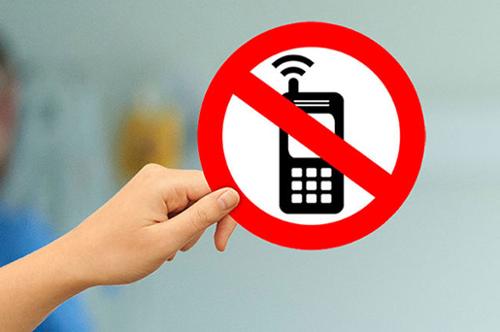It’s a situation many healthcare providers know all too well: you’re in the middle of a consultation, and suddenly, a patient’s phone rings. The patient picks it up, engaging in a conversation as if you weren’t there. In today’s world of constant connectivity and instant access to social media, it can be challenging to prevent patients from using their devices during appointments. However, with the right strategies, you can diplomatically manage this behavior and reduce distractions in the clinic.

Post Your Policy
The first step in minimizing phone use during patient visits is to clearly communicate your clinic’s device policy. Make sure that your no-device or limited-device use policy is clearly posted at the clinic entrance, in the waiting area, and in every exam room. New patients should be informed of this policy when they arrive. Visible signage reinforces the expectation that personal devices should not be used during appointments, helping to establish a professional, focused environment for both staff and patients.
Practice What Your Preach
As a healthcare provider, you set the example for everyone in the clinic. Patients and staff notice how you handle your own phone use, so it’s essential to lead by example. If you want to enforce a device-free zone in your clinic, start by ensuring that your phone is out of sight or that the ringer is turned off during consultations. If you need to stay connected due to urgent consults or alerts, consider using a smartwatch. A quick glance at your wrist is less disruptive than pulling out your phone during an appointment.
Discuss the Negative Effects of Device Use
When a patient uses their device in the exam room, it’s important to gently address the issue. Politely remind them that everyone’s time is valuable and that using their phone during the consultation can create unnecessary delays for both of you. Explain that staying focused on their care ensures you can stick to the schedule and reduce waiting times for them and other patients. By framing it in terms of efficiency and respect for everyone’s time, you can minimize resistance.
Repeat Offenders
Sometimes, even after you’ve discussed your policy, a patient may continue to use their device during visits. For these situations, it’s important to set clear consequences. While you can’t refuse care, you can delay the consultation until the device is put away. For example, if a patient uses their phone after being reminded of the policy, you can calmly inform them that you’ll return to the room once they’re done with their call. Proceed with the next patient on your schedule, and only return to the original patient once they’ve stopped using their device. This approach reinforces the importance of the policy without escalating the situation.
Managing personal device use in the exam room requires a combination of clear communication, leading by example, and respectful but firm enforcement of policies. By taking these steps, you can reduce distractions, improve time management, and ensure that patients stay focused on their health during consultations.
*Originally posted on 5/26/2020. Last updated on 9/11/2024.

With a career focused on healthcare Business Development and Service Line performance, Paul had recently been at the forefront redefining the traditional In-house Provider Recruiting role. In his position as Medical Staff Development Officer at University Hospitals, Lake Health Region in Cleveland, Ohio, Paul integrated collegial interaction, analytics, and provider experience expertise to drive a differentiated recruitment strategy.
Paul has brought that knowledge and experience to Client Sourcing at PracticeMatch. Joining PracticeMatch in 2021, Paul supports Client Sourcing’s pro-active recruiting model that generates a robust prospect pool, creates an effective and efficient recruiting experience, and identifies key metrics to ensure optimal performance for the client. Paul has a commitment to learning, development and passion for building a team of recruiting professionals to leverage their national footprint which benefits its client organizations and their candidates.